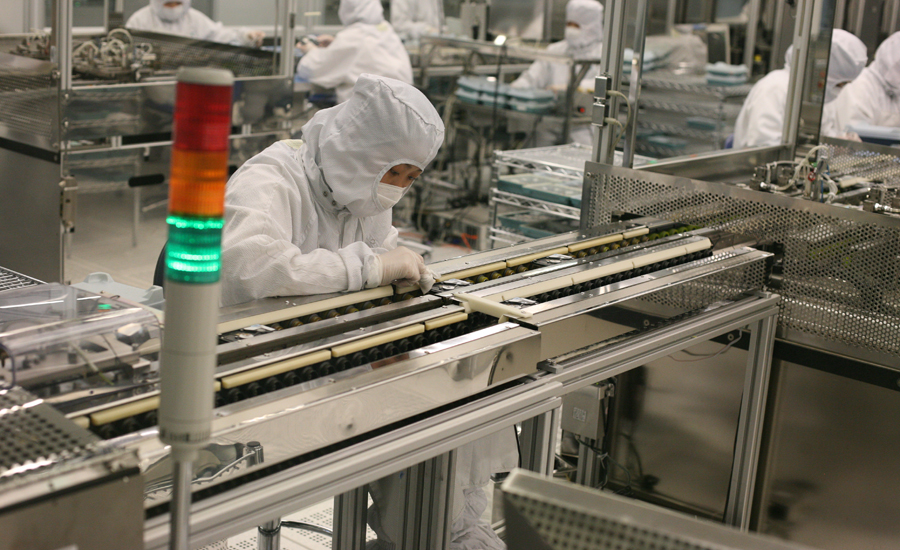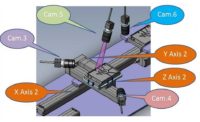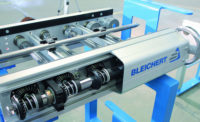Immediate requirements were to install a system to handle the increased capacity from the final wash process to the automated optical inspection (AOI) area. The specification called for a Class 10 compatible intelligent conveyor system, which would route individual caddies from any washer to any tester. The transfer system needed to allow product buffering but not product-to-product contact.
Seagate also decided that automating supply and removal of shipping caddies in the AOI area would improve congestion and cleanliness. This specification called for a bidirectional conveyor system that could handle the product gently, route and accumulate empty and full caddies under minimum line pressure conditions and meet Class 10 cleanliness. "It was important to find a partner who had proven ability to meet our strict process specifications, who could offer full project management and who could deliver on time," says Ciaran Nicell, equipment manager.
Shuttleworth Europe Ltd. became Seagate's supplier and partner for these projects.
Shuttleworth installed its Class 1 compatible zone control conveyor to connect the final wash process to the AOI area. The conveyor has a modular configuration and can handle sensitive products, such as silicon wafers or hard disk media, without impacts.
The conveyor has individual drives for each zone. Each conveyor zone has a drive motor, zone sensors and control logic. The logic in each zone analyzes the state of the zone behind and ahead. If the preceding zone is active, then the zone will activate if the zone ahead is free. Otherwise, the zone is inactive until the zone ahead is free. Zones share signals to preceding or following conveyor zones. If a caddie doesn't arrive at a zone after leaving a preceding zone, an alarm signal is activated to highlight the error.
The conveyor transport element interface has self-guiding rollers. The rollers are positively driven and avoid "crabbing" problems normally associated with warped caddies. Lateral product vibration is also minimized. All drive areas are sealed, and external components use non-outgassing, nonparticulating plastics and paints to maintain International Organization for Standardization (ISO) Class 4 compatibility. The system also includes servo-driven vertical conveyors, rotators and horizontal transfer slides.
A Class 10 compatible low-profile conveyor was chosen to supply and remove shipping caddies in the AOI area. Nicell says it offers a bidirectional space-saving feature while ensuring low-line pressure accumulation, which is a requirement.
In addition to the conveyor, Shuttleworth designed an automated cassette buffering system that stores and retrieves 600 cassettes or caddies at one end of the line. A pneumatic vertical conveyor at the other end removes empty cassettes from the room.
For more information on conveyor systems, call 800-444-7412, visit www.shuttleworth.com.



